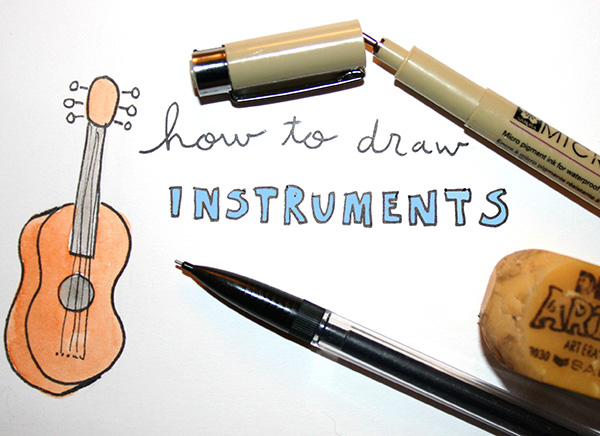
Illustrations and photographs via CakeSpy
By mastering a few simple methods of how to draw instruments, you’ll make musical art without making a sound.
Even if you can’t carry a tune to save your life, you can easily master the art of drawing musical instruments. By reducing the complicated curves, buttons and keys into simple shapes, you can create templates from which you can create just about any musical instrument, from a guitar to the flute, the piano to the French horn, and beyond.
It’s easy as do-re-mi, so let’s get to the part where we create art.
Start with a shape
By breaking down an instrument into a simpler form, it is easy to create a sketch from which you can create a more complex instrument shape.
Every instrument can be reduced to a much simpler shape. A flute is a tube; a guitar is a rounded hourglass shape. A saxophone is really just a stylized letter “s”.

It’s only a matter of adding detail and refining these shapes to make them start looking like instruments. See?
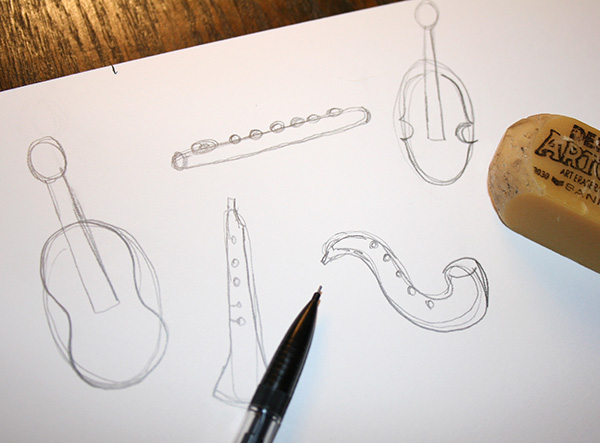
To illustrate with a more specific example, let’s look at the guitar.
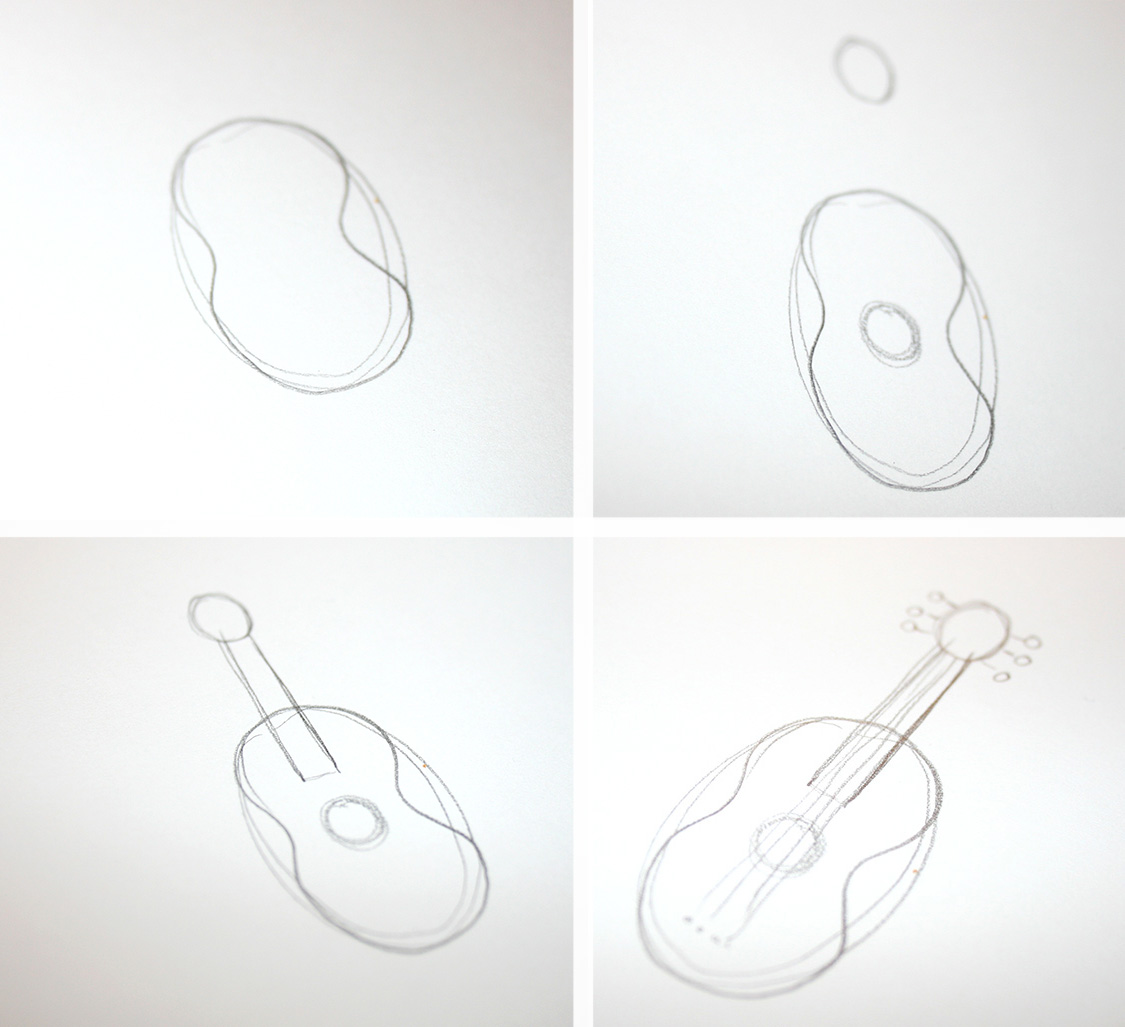
You can start with a simple oval. Then, by simply bringing in the sides a little bit, it starts to take on a guitar shape. Then, you can start to add other simple shapes: an oval for the head of the guitar (the part where the tuning pegs live), a rectangle for the fretboard, a circle for the hole in the guitar. From there, you’ve got the “bones” for your guitar, and all you need to do is refine the details.
Just about any instrument can be created in the same way, by choosing a simple form from which you can carve the instrument’s shape from the space within.
Add dimension
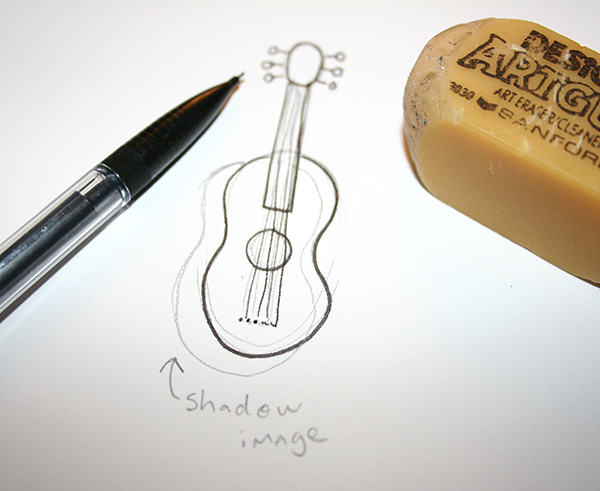
It’s easy to add dimension once you’ve gotten the basic shape down. For most instruments, you can pretend that there is a shadow image behind and then fill in the blanks. Once again using the example of the guitar, once that “shadow” image is created, you can simply ink or pencil in the portions which are exposed, erasing the portion of the penciled-in image which would be under the body of the guitar. This way, you create simple dimension. You can enhance this effect by adding hatching or cross hatching, or by shading the sides, either in pencil or in pen.
Detail orientation
If you are working on a highly realistic image, the details such as number of frets on a guitar or the keys on a flute will be important. Working with a grid can be very helpful in getting the right alignment on such an image, although still, the instrument will come down to a basic shape.
But if your work is more painterly or used in a more cartoonish way, you can reduce the instrument’s form into a recognizable shape.
Looking back to the guitar we’ve used in the example…
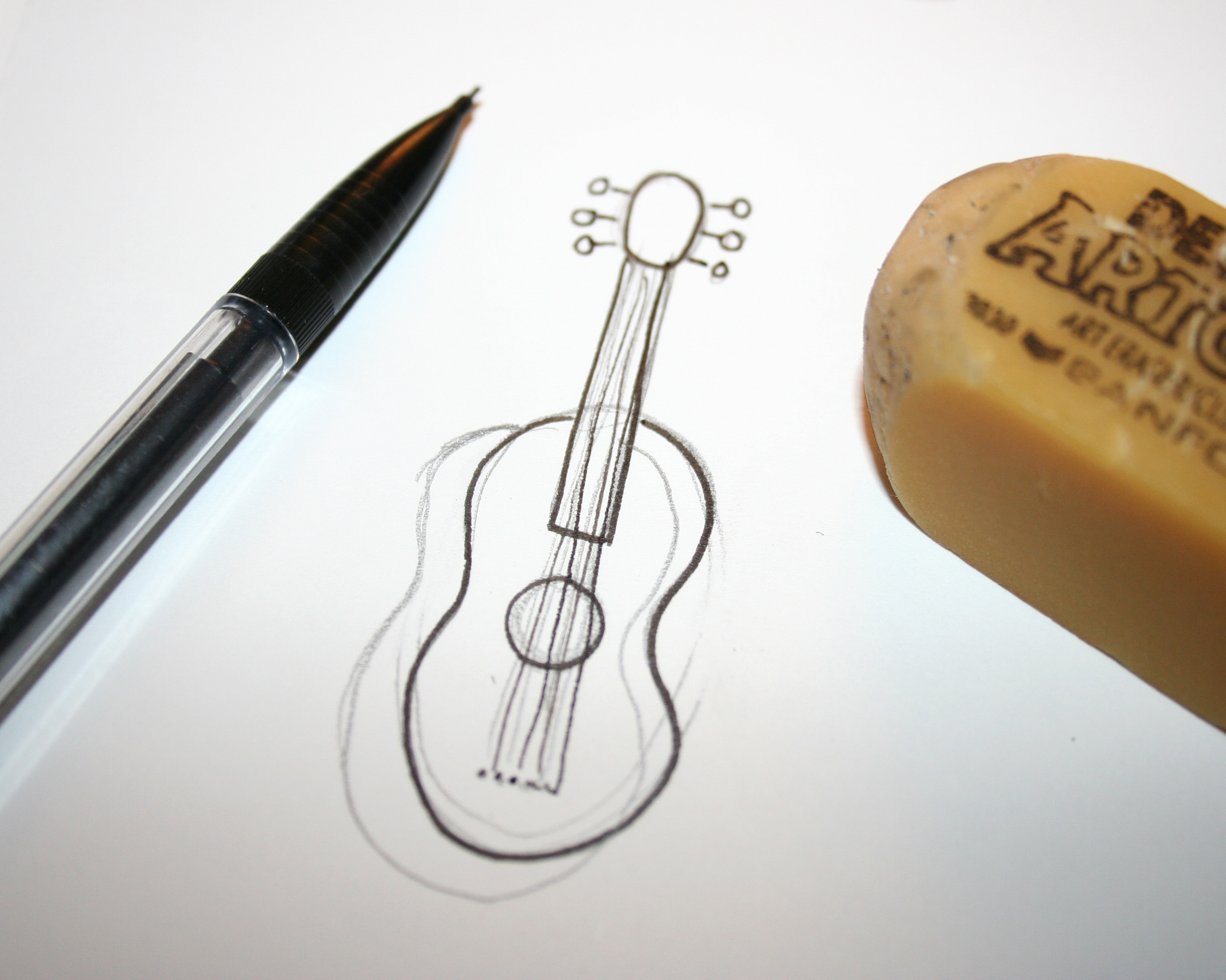
When you look closely, this is not a guitar that anyone could really ever play. The amount of strings doesn’t match the tuning pegs, and come to think of it, the strings aren’t even attached to the tuning pegs. Yet the drawing adeptly conveys the image of a guitar by reducing it into a recognizable form. In any type of art, you can invite the viewer to suspend disbelief to get the bigger picture across. This is very much the case with instruments. It’s not necessarily of high importance to get the exact placement of every button and knob on an instrument as long as you’ve conveyed the general impression of the instrument.
Apply your knowledge
Whether it’s wind, percussion, or percussion, just about any instrument can be made using the same basic shapes. For instance, once you’ve mastered making a guitar, it’s easy to parlay your knowledge into drawing a violin, viola, cello, or bass. Using the guitar method on a circle instead of a rounded hourglass shape gets you a banjo. It’s easy to make a flute shape into a clarinet, and so on.

Even more complicated instruments, such as the French horn, still boil down to simple shapes. By starting simple, you can layer complexity and ultimately come up with an image that gets the point across.

Share tips, start a discussion or ask one of our experts or other students a question.
No Responses to “Harmonious Art: How to Draw Instruments”